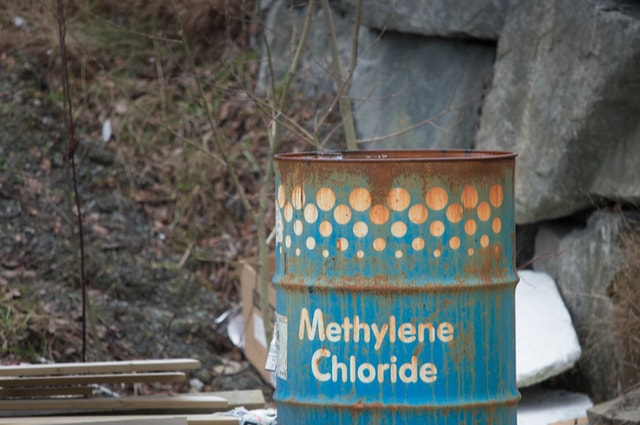Beware of Methylene Chloride found in Paint Strippers!
 Methylene Chloride is a chemical solvent commonly found in paint strippers and is so deadly that we strongly advise leaving it to the professionals when it comes to paint stripping.
Methylene Chloride is a chemical solvent commonly found in paint strippers and is so deadly that we strongly advise leaving it to the professionals when it comes to paint stripping.
One common reason for the use of powerful paint strippers in the first place is that the average lifespan of most paint colours is around eight years, beyond which the paint will begin to degrade and peel. After this period elapses, the paint starts to degrade and peel off, which appears very unattractive. Premium Door Stripping can use these chemicals safely and responsibly to avoid your painted surfaces from deteriorating and looking horrible, you should get them stripped and repaired early enough.
Methylene Chloride, aka Dichloromethane (DCM), Methylene Dichloride and Methane Dichloride, is used most prominently in industry in the production of paint strippers.
Public Health England (PHE) reports that Methylene Chloride was used in commercially available paint stripper products until 2010 when its use in these products was banned within the European Union. PHE’s Centre for Radiation, Chemical & Environmental Hazards describes Methylene Chloride as clear, colourless, volatile liquid with a sweet odour with the following potential side effects:
- Exposure is most likely to occur in the workplace where it is produced and used
- Ingestion may cause burns to the digestive tract
- Inhalation of vapours may cause shortness of breath and coughing
- May cause cancer in humans
- Skin contact may cause either burns or a burning sensation and pain
- Vapours irritate the eyes and contact with the liquid form may cause burns to eyes
Of course, there are other chemical solvents whose usage should also be approached with caution as no chemical is completely ‘safe’. Aside from being hazardous, these other chemicals can variously cause damage to a user’s eyes and skin, respiratory tracts and nervous system. The chemicals also need special handling and should be kept away from children due to their irritant effect and toxicity.
However, it our professional obligation to emphasise that Methylene is so hazardous that we strongly advise leaving it to the professionals when it comes to paint stripping.
With our expertise in the paint stripping business, Premium Door Stripping specialise in removing paints from doors, furniture, fireplaces, cupboards, radiators and benches or wooden window shutters safely and responsibly on behalf of our customers. Premium Door Stripping is a reliable market supplier and leading provider of paint removal and paint stripping services in the UK.




